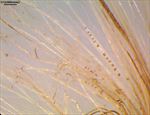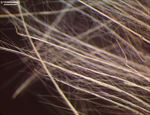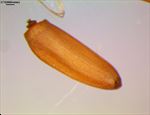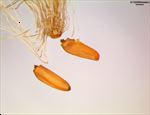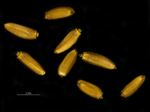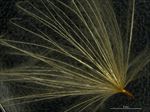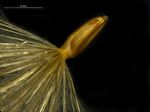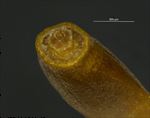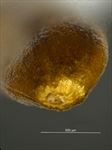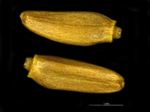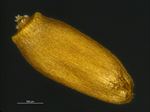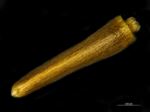Taxonomy
Cirsium arvense (L.) Scop., Fl. Carniol. ed. 2, 2:126. 1772Common name
Creeping thistle, California thistle, Canada thistle, corn thistle, cursed thistle, field thistle, and many others
Description
Propagule or dispersal unit is the fruit with pappus. Fertile part 2.3-3.5 mm long, 0.6-1.1 mm wide, in side view widest in upper part (obovoid), rarely widest in the middle, +/- straight, the upper (apical) end narrowing, in cross-section flattened, basal scar (carpopodium) inconspicuous and undifferentiated, central, rarely off to the side (oblique) or at least asymmetric, beak (=thinner sterile stalk between seed and pappus) absent, wings absent, fruit surface light brown or straw, smooth (except at cellular level), with no hairs (glabrous), thickened margin absent, longitudinal ribs absent.
Pappus type bristles / hairs, pappus elements all +/- similar, up to 15-27 mm long, in several rows, pappus elements numerous, falling off as a whole, the individual bristles feathery (plumose) along most of length, +/- equal width along length or clearly wider at base, white / translucent, rarely brown.
Ecology
Perennial herb spreading through underground rhizomes, seeds wind-dispersed. Temperate regions. Weed of grasslands, pastures, low-intensity cropping, and disturbed sites near human habitations.
Native range
Europe, Tunisia, Sudan, temperate Asia from Caucasus to Iran, Afghanistan and Turkmenistan
Introduced range
Canada, United States, Chile, Angola, Swaziland, South Africa, Pakistan, India, China, Korea, Japan, Australia, New Zealand
